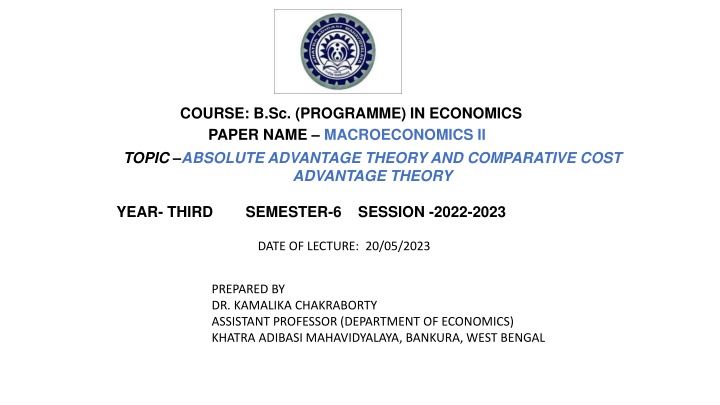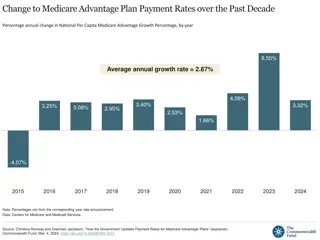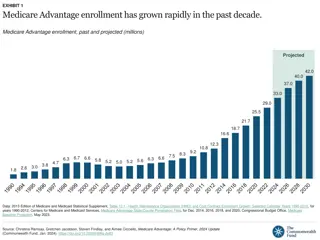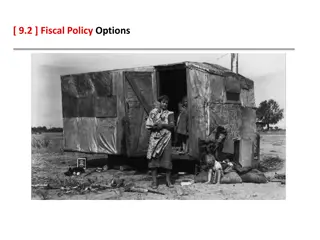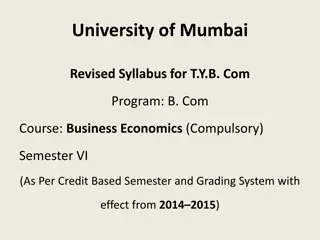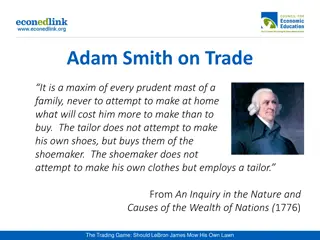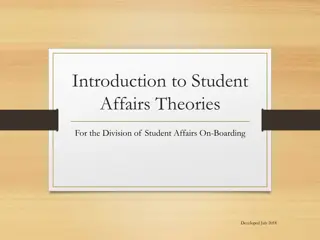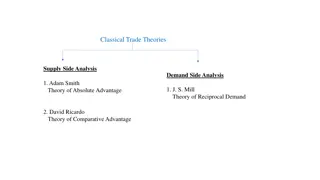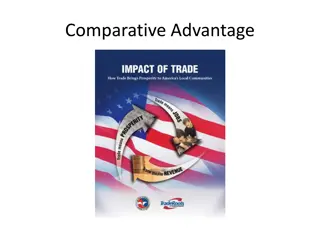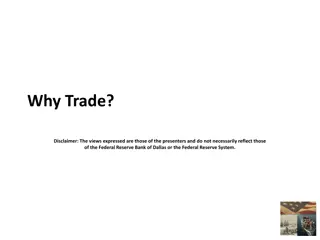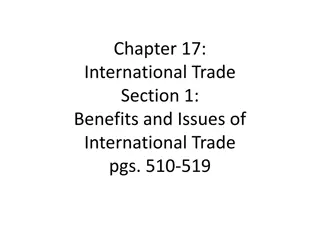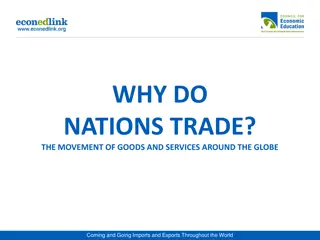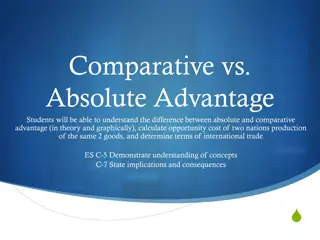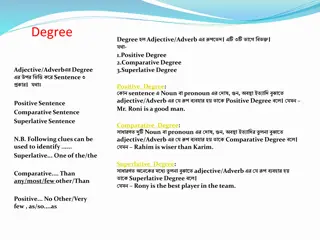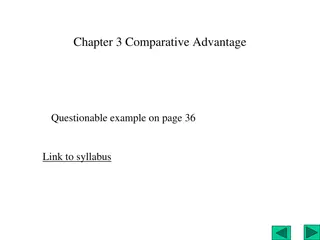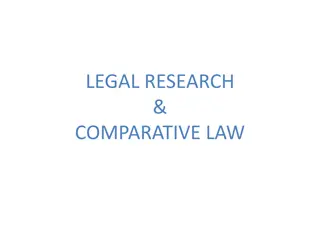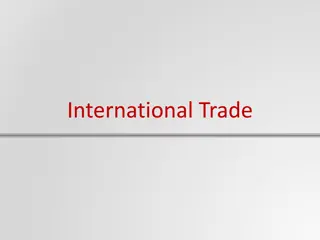Absolute & Comparative Advantage Theories in Economics
The discussion covers Adam Smith's Absolute Advantage Theory and David Ricardo's Comparative Cost Advantage Theory in economics, exploring how countries benefit from specializing in production based on labor efficiency. The models highlight how trade can lead to increased world output and mutually beneficial exchanges between nations.
Download Presentation

Please find below an Image/Link to download the presentation.
The content on the website is provided AS IS for your information and personal use only. It may not be sold, licensed, or shared on other websites without obtaining consent from the author.If you encounter any issues during the download, it is possible that the publisher has removed the file from their server.
You are allowed to download the files provided on this website for personal or commercial use, subject to the condition that they are used lawfully. All files are the property of their respective owners.
The content on the website is provided AS IS for your information and personal use only. It may not be sold, licensed, or shared on other websites without obtaining consent from the author.
E N D
Presentation Transcript
COURSE: B.Sc. (PROGRAMME) IN ECONOMICS PAPER NAME MACROECONOMICS II TOPIC ABSOLUTE ADVANTAGE THEORY AND COMPARATIVE COST ADVANTAGE THEORY YEAR- THIRD SEMESTER-6 SESSION -2022-2023 DATE OF LECTURE: 20/05/2023 PREPARED BY DR. KAMALIKA CHAKRABORTY ASSISTANT PROFESSOR (DEPARTMENT OF ECONOMICS) KHATRA ADIBASI MAHAVIDYALAYA, BANKURA, WEST BENGAL
ADAM SMITHS ABSOLUTE ADVANTAGE THEORY The theory of absolute advantage was put forward by Adam Smith. Smith argued that different countries enjoy absolute advantage in the production of some goods which formed the basis of trade between the countries To produce one unit of wheat in the U.S.A. 3 man-hours and in India 10 man-hours are required. On the other hand, to produce one unit of cloth, in the U.S.A. 6 man-hours and in India 4 man-hours are required. Thus the U.S.A. can produce wheat more efficiently (that is, at a lower cost), while India can produce cloth more efficiently Adam Smith showed that the two countries would benefit and world output will increase if the two countries specialize in the production of goods in which they have absolute advantage and trade with each other.
Suppose to specialize in the production of Wheat, the U.S.A. withdraws 6 man-hours from the production of cloth and devote them to the production of wheat, it will lose 1 unit of cloth and gain 2 units of wheat. Similarly, to specialize in the production of cloth if India withdraws 10 hours of labour from wheat and use them for the production of cloth, it will lose one unit of wheat but gain 2.5 units of cloth. In this way, transfer of labour resources to the goods in which they have absolute advantage, will result in the net gain of one unit of wheat and 2.5 units of cloth. The gain in output can be distributed between the two countries through voluntary exchange.
RICARDOS COMPARATIVE COST ADVANTAGE THEORY The Law of Comparative Advantage David Ricardo was the proponent of Comparative cost Advantage Theory. According to him international trade is governed by the comparative cost advantage rather than the absolute cost advantage. In a two-nation and two- commodity world economy, even if one nation is less efficient than the other nation in the production of both commodities, there is still a basis for mutually beneficial trade. A country will specialise in in the production of that good in which it has a greater relative or comparative advantage in costs than other countries and will import all such commodities from abroad in which it has relative cost disadvantage. The Ricardian model is based on technological differences across countries. These technological differences are reflected in differences in the productivity of labor.
Assumptions of the model: Two countries(Home and Foreign) and two commodities world Free Trade takes place between the two countries There is only one factor of production i.e. labour and the cost of producing a commodity is expressed in labour units There is perfect mobility of labor within each nation but immobility between the two nations Constant costs of production No transportation cost No technical change There is full employment of resources in both the countries. There is no intervention by the government in economic system Perfect competition exists both in the commodity and factor markets
Country A has an absolute advantage in producing both the commodities through smaller inputs of labour than in country B. In relative terms, however, country A has comparative advantage in specialising in the production and export of commodity X while country B will specialise in the production and export of commodity Y. In country A, domestic exchange ratio between X and Y is 12 : 10, i.e., 1 unit of X = 12/10 or 1.20 units of Y. Alternatively, 1 unit of Y= 10/12 or 0.83 units of X. In country B, the domestic exchange ratio is 16 : 12, i.e., 1 unit of X = 16/12 or 1.33 units of Y. Alternatively, 1 unit of Y = 16/12 or 0.75 unit of X. From the above cost ratios, it follows that country A has comparative cost advantage in the production of X and B has comparatively lesser cost disadvantage in the production of Y.
References: https://www.economicsdiscussion.net/international-trade/the-theory-of-absolute-advantage/10705# https://www.economicsdiscussion.net/economic-theories/comparative-costs-theory/david-ricardos- theory-of-comparative-cost-advantage-economics/30673
